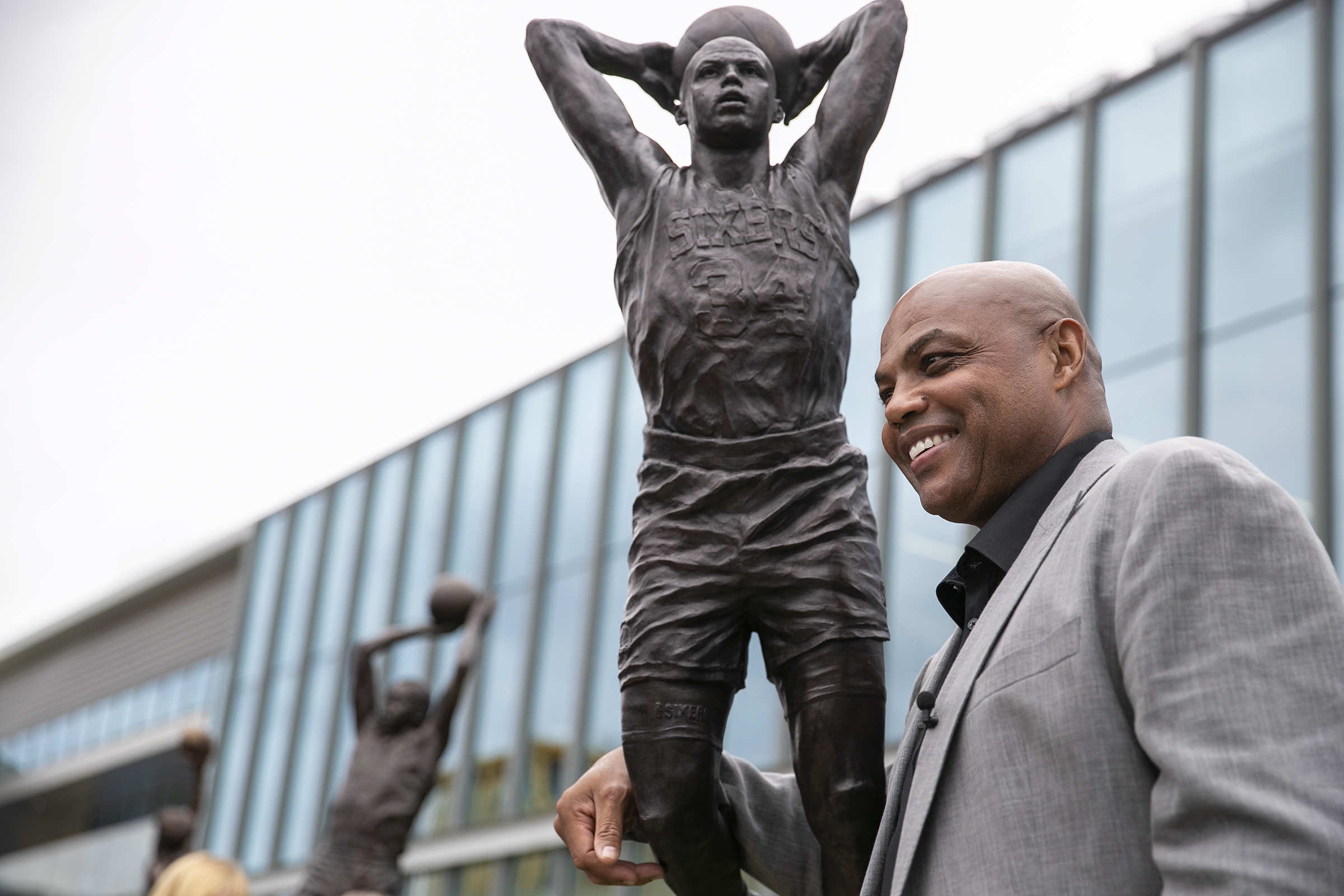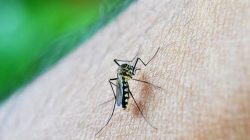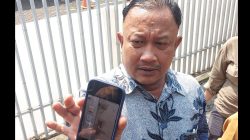Ginny Burbage was operating the conveyor belt at a FedEx location in Delaware County in 1991 when she noticed an envelope meant for Charles Barkley. At that time, she was a delivery driver and was aware that her company had strict policies regarding the handling of customers’ private details.
However, as packages fell onto the conveyor belt, she quickly decided to move the envelope to one side. She wrote down Barkley’s address, placed the envelope back, and put the note in her pocket.
The following night, she remained in her large, brown truck near a drop box in Morton. She placed a clipboard next to her steering wheel, took out a yellow sheet of paper, and started writing a letter to the 76ers’ power forward.
Burbage began her journey with her brother, Tommy Murphy. She shared that he was diagnosed with Ewing sarcoma, a rare form of bone cancer, in 1989. Murphy underwent various chemotherapy treatments and even had a leg amputated in 1990 as a measure to prevent the cancer from spreading.
However, none of those attempts were successful, and now, doctors informed him that he had only a few months left to live. Therefore, Burbage introduced an idea to Barkley. Before his brother became ill, he used to play informal basketball almost daily. He was a fan of the Sixers, and Barkley was his favorite player.
It would be a dream if you could see him,” Burbage wrote, “just to bring a smile to his face once more.
In 1954, a small town gave Wilt Chamberlain one of his three high school defeats. This signed document reveals he never let it slip from his memory.
She placed the letter in the mailbox, doubtful about getting a reply. However, a few days later, in late September, Burbage’s phone rang.
Hello,” a voice echoed from the other side. “This is Charles!
“Who?” Burbage responded.
“Charles Barkley,” he said. “I received your letter. I will contact you this week. I would like to stop by and meet with you.
The SixersStar honored his promise. Soon after that phone call, Barkley, who wasn’t familiar with Murphy’s area, met Burbage near Philadelphia International Airport and then accompanied her to her mother’s house in Prospect Park.
He entered their aged, three-level home, lowering his head to avoid the ceiling. What followed surpassed the family’s expectations. Barkley remained for two hours. He sat on Murphy’s bed and discussed basketball and life, as though they were two individuals in their 20s relaxing at a bar.
Barkley provided signed jerseys and cards and posed for pictures with the group. Almost 34 years later, Murphy’s six siblings still display those photos on their walls and in frames within their living rooms; a surprising moment of happiness with their late brother.
When my brother passed away, we would look at that photo and recall that moment,” Burbage said. “It made things easier. It was simpler to cope, knowing he was happy.
For those two hours, it seemed as if he might not have had cancer. You know?
Playing through the pain
Murphy was tall, thin, and kind-natured. He had been involved in basketball his entire life, starting with the Boys and Girls Club, and later at Moore’s Lake Park in Delco, commonly referred to as “The Hollow.”
In 1989, he sprained his ankle while playing an informal game. At that time, he was employed as a landscaper and didn’t have health coverage, so he chose not to see a physician. Murphy attempted to use ice on the wound, but the swelling continued. Eventually, it became more severe.
A signed church program recounts the tale of ‘faith-driven’ Tug McGraw’s friendship with a priest
His skin changed from a combination of purple and red to a deep brown. The swollen region expanded across his ankle. A visit to Thomas Jefferson University Hospital in the fall of 1989 led to a severe diagnosis: Ewing sarcoma, a type of cancer that was especially challenging to treat. He was 20 years old.
Murphy started chemotherapy right away. The medical team tried to surgically remove the cancer, but it kept spreading. They removed his right leg below the calf, but that didn’t prevent the illness from progressing further.
By 1990, his chances of living were low, yet he continued forward, despite his physical challenges. During a visit after his amputation, physicians talked about various types of prosthetics for Murphy to utilize.
Murphy was naturally quiet, so he didn’t speak much. However, his sister, Pam Barr, did.
The doctors were asking, ‘Well, okay, do we just want something to prevent him from falling over, or [something that helps him] walk?’” Barr said. “And I replied, ‘He plays basketball every day. That’s his life. I don’t know if that helps you.’
After several weeks of physical rehabilitation, Murphy was back on the court. He participated in informal games during chemotherapy sessions to maintain a sense of normal life. Naturally, it wasn’t the same. He discovered that his prosthetic was cumbersome and rigid, and he could no longer slam dunk or sprint as he once did.
But he remained active, pursuing the passion that defined him. Murphy continued to play until his body could no longer support him. He ceased treatment and started receiving palliative care in the fall of 1991.
Standing 6-foot-2 and being 22 years old, Murphy should have been in the best of his health, training at The Hollow daily. However, he was restricted to his bed, spending hours sleeping. Food was delivered to his room.
This was how he was when Barkley arrived. Burbage didn’t inform her brother that the Sixers forward was coming. It was early afternoon, and Murphy was resting, feeling more exhausted than usual.
But when Barkley entered the room, he immediately stood tall.
“Hello!” Barkley said, with his deep Alabama accent.
“Charles!” Murphy responded, shocked.
Barkley shook hands with Murphy and presented him with some autographed items. Virginia, Murphy’s mother, handed the Sixer a Coke and a sandwich. As everyone moved into the small bedroom, the two men started discussing the game from their perspective: the NBA, casual basketball games at The Hollow, and regional players.
At a certain moment, Barkley observed that Murphy had a poster featuring him, mid-dunk, displayed on his bedroom wall. “Great poster,” he remarked with a loud laugh. They posed in front of it and took several more photos with Murphy’s family.
Following the photographs, the Sixers’ star and the devoted fan spent an hour together. Barkley exited the bedroom, descended the stairs, and headed to his car. Murphy passed away 5½ weeks later, on November 10, 1991.
There were no cameras,” Burbage mentioned. “There was no social media. Therefore, only our family and friends were aware of it.
We’ve always said, ‘One day, we all wanted to let him know how thankful we are.’ That’s one of my desires.
‘He’s our angel’
Barkley was moved to the Phoenix Suns the subsequent summer. Although he was well-liked by numerous supporters, not all were upset about his departure. Some fans expressed that he did not function well as part of a team. Others mentioned that he had a negative demeanor.
However, in the Murphy family, the power forward was never at fault. A few of Burbage’s brothers and sisters purchased Suns merchandise. Her mother, who had not shown much interest in basketball before, started watching Barkley’s games as closely as possible.
You couldn’t utter a single negative word about him,” Burbage stated. “If you said anything bad about Barkley in front of my mom, after my brother passed, she would give you a piece of her mind.
Re-examining the Phillies’ Hot Pants Patrol, a bond that remains strong
Barr supported Barkley with the same intensity.
Philly fans can be harsh,” she said. “But I’d tell them, ‘Nope, I don’t care what anyone says. He’s our angel. We love him dearly.’
Courtney, Burbage’s daughter, also saw Barkley’s visit. She doesn’t recall much—she was just 4—but has heard the tale so often that she can now repeat it from memory. She refers to it as something similar to “family tradition.”
One day, when she was eight years old, Courtney saw Barkley on her television, in the filmSpace Jam.
Aliens took away Barkley’s “basketball abilities,” and he was participating in an informal game with some local children. One child approached him after blocking his jump shot and said, “Leave, fake.”
I recall being extremely angry with that girl,” Courtney stated. “Since Charles was a saint in my thoughts.
Her family continues to feel this way. They frequently look back on the Charles Barkley story. Even after many years, it has aided their recovery. Every time Burbage misses her brother, she can look toward her living room wall. Barr can also look toward her living room shelf.
They can spot Tommy, grinning widely, standing beside his idol and his brothers and sisters, and realize that even in the final moments, he managed to discover joy.
The Inquirer is featuring a series about the tales behind special sports collectibles. If you wish to suggest a topic, please send an email[email protected].
©2025 The Philadelphia Inquirer. Go to inquirer.com. Distributed by Tribune Content Agency, LLC.







